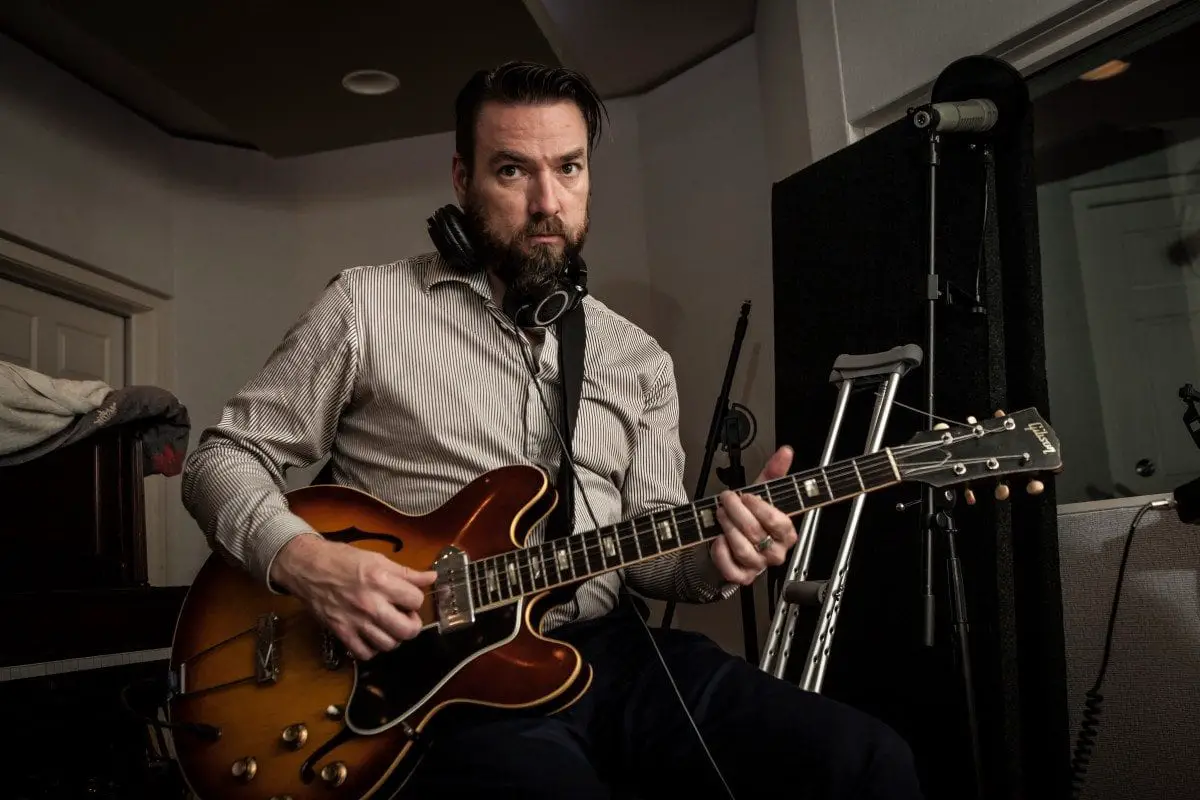
Funk may have spent its infancy here in the U.S., but at some point it must have been stowed away in a Gulf ship destined for the shores of our British neighbors. The New Mastersounds have been around for a while now, originating in Leeds, England in 1999 and putting out an album just about every year or two since their inception. Even with the loss of longtime organist Bob Birch in 2007, the band has stayed true to their original sound and continued at their feverish pace. The New Mastersounds’ latest release, Therapy, is the ninth album from the British funksters and was recorded near Red Rocks in Morrison, Colorado this past year. The album masterfully traverses everything from jazz, funk, and soul, to covering the Bruno Mars song “Treasure.” The album also features guest performances by Lettuce’s saxophonist Ryan Zoidis and The Motet’s singer Kim Dawson.
The first track is titled “Old Man Noises” and opens with a snare roll before diving right in to one of the most rhythmically driven songs on the album. The intensity of this deeply funky song hits you right away and draws you in for the rest of the album. In the fleeting moments of the three-minute track, drummer Simon Allen goes off on a short-lived solo that gives you one last rush before slowing things down on the second track, “Morning Fly.” The back-to-back combo of the two is complimentary, yet polarizing. In “Morning Fly” the band takes their time and develops the slow-rolling jazzy vamp. Around the two-minute mark, a blues-inspired piano solo runs the ivory gamut and elegantly holds your attention throughout. It’s tastefulness and simple beauty add to the song’s well-crafted atmosphere.
“I Want You to Stay” is the first track on the album that features a guest in The Motet’s Kim Dawson. Her voice is rich in feeling and emotion and her soulful tone pairs well with the band’s delivery. The song is yet another example of how the band can take an easygoing melody and really push it to something that truly grabs your attention. Similarly, Dawson holds her voice back just enough to make you lean in and listen. There is nothing fancy on this track, yet you’ll find yourself closing your eyes and getting lost in the hypnotic chant of the title every time.
The hidden theme through each of the twelve tracks is how expressive the band can be while still staying off of the radar. The group rarely tips their hand and always leaves you wanting more throughout the album’s entirety. The song “Stop This Game” is another that you could glance over on your first pass through. Its laid back style is undermined from the get-go by a propelling beat that never lets up. The drums don’t command attention though, just calmly push along like a duck whose feet never stop under the water. The musicianship extends in all directions on this one as well. Following the first and second chorus, the band pulls back to support a solo from pianist Joe Tatton and guitarist Eddie Roberts respectively. These two add just the right amount of flavor before dropping back out and showcase their overall control by not overindulging. Two-thirds of the way through the song, the band switches gears into a reggae-inspired groove that is somehow blended flawlessly. Starting this song, you’d never expect it to go that way, but at this point it shouldn’t be surprising what these guys are capable of.
The album as a whole covers a lot of ground, but never fails to deliver. As their popularity grows, we can only hope that their stateside touring grows with it. The band was gracious enough to share with some shots from the studio in the gallery below. The shots were taken by drummer Simon Allen and do an excellent job of making you feel as if you were right there with them. After glancing through some of the pictures, you’ll notice the notes will begin to resonate deeper knowing what it was like to be there as this beautiful piece of work was captured.
Key Tracks: I Want You To Stay, Stop This Game, WWIII (And How to Avoid It)
















Comments are closed.